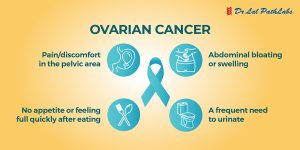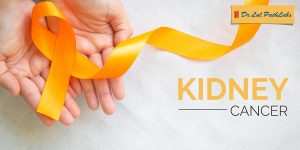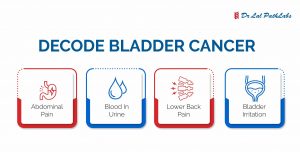What are the Symptoms of Lymphoma?

Lymphoma is a blood cancer that specifically targets lymphocytes, a type of white blood cell. The disease is marked by an uncontrolled multiplication of these lymphocytes, affecting not just your blood but other elements of your lymphatic system, including lymph nodes, the spleen, and bone marrow.
Recognizing the symptoms of lymphoma is a critical step toward early diagnosis and effective treatment. In this blog, we offer an in-depth guide to identifying the various symptoms of lymphoma to enable early detection and optimal treatment outcomes.
Types of Lymphoma
Lymphoma mainly falls into two categories:Hodgkin Lymphoma: It is notably defined by the presence of Reed-Sternberg cells and commonly affects young adults. Subtypes of Hodgkin Lymphoma include Nodular Sclerosing and Mixed Cellularity, among others.
- Non-Hodgkin Lymphoma: It is a more diverse category with over 70 subtypes and lacks Reed-Sternberg cells. Subtypes of Non-Hodgkin Lymphoma range from the aggressive, such as Diffuse Large B-cell Lymphoma, to the more indolent forms, like Marginal Zone Lymphoma
Understanding these types is crucial because each has its common and specific symptoms, affecting different age groups and requiring unique treatment approaches.
Symptoms of Lymphoma
Lymphoma often presents itself through non-specific symptoms, making early diagnosis challenging. However, there are some common symptoms seen across all types of lymphoma:
- Swollen Lymph Nodes: One of the first and most noticeable signs is swollen lymph nodes in the neck, armpits, or groin. These swollen nodes are generally painless, and swollen lymphoma lumps on the neck may be noticed.
- Fever: A persistent fever can often accompany lymphoma, although it is common to many other illnesses.
- Excessive Sweating: Particularly at night, excessive sweating is a common symptom, sometimes to the point of drenching night clothes and bedding.
- Unexplained Weight Loss: A significant body weight loss without effort can be a concerning sign.
- Persistent Fatigue: An unusual and unshakeable feeling of tiredness and weakness, often not alleviated by rest or sleep.
- Severe Itching and Rashes: Itching can occur all over the body and is often intense, causing discomfort. Lymphoma rashes may also accompany itching.
- Abdominal Discomfort: Due to an enlarged spleen or lymph nodes in the abdomen, you might experience a feeling of fullness even after eating a small amount.
Symptoms of Hodgkin Lymphoma
Some key signs of Hodgkin Lymphoma include:
- Swollen Lymph Nodes: One of the earliest indicators often involves swollen, usually painless, lymph nodes in the neck, collarbone area, or even in the armpit and groin. These nodes may be deeper within the body and not immediately visible, causing symptoms due to pressure on other organs.
- Chest Symptoms: When Hodgkin Lymphoma develops in the chest, symptoms may include persistent coughing, breathlessness, and chest pain.
- B Symptoms: These are significant to the disease’s prognosis and include high fever (38°C or higher) not attributed to infections, sudden weight loss and severe night sweats.
- Physical Symptoms: Some physical symptoms of Hodgkin lymphoma include persistent fatigue, severe itching and abdominal pain due to an enlarged spleen.
- Alcohol-Induced Pain: A unique symptom where lymph nodes may become painful after consuming alcohol.
- Additional Concerns: Some patients may have abnormal cells in their bone marrow, leading to an increased risk of infections and excessive bleeding, such as nosebleeds or heavy periods.
Symptoms of Non-Hodgkin Lymphoma
Non-Hodgkin Lymphoma (NHL) is a broad category of lymphoma, with symptoms that can vary depending on the specific subtype. However, there are some general symptoms commonly associated with NHL:
- Swollen Glands: One of the earliest signs of NHL is swollen lymph nodes in the neck, armpit, or groin area. These nodes are usually painless.
- Extreme Fatigue: Patients often report a persistent feeling of tiredness that doesn’t improve with rest or sleep.
- Chills: Chills are a common symptom experienced by patients with non-Hodgkin lymphoma. These chills can be intermittent and may occur without a fever.
- Weight Loss: This weight loss is often significant, amounting to a loss of at least 10% of body weight over six months without any effort to lose weight.
- Abdominal Discomfort: A feeling of fullness or sickness due to swelling in the stomach area can be a sign of NHL.
- Chest Symptoms: If the lymphoma affects the chest area, symptoms may include chest pain, cough, or breathlessness.
- Severe or Frequent Infections: A compromised immune system may lead to frequent or long-lasting infections.
- Easy Bruising or Bleeding: A low platelet count resulting from NHL can cause abnormal bleeding or bruising.
Understanding the symptoms of lymphoma is crucial for early diagnosis and effective treatment. Whether it’s Hodgkin or Non-Hodgkin Lymphoma, each type presents unique signs alongside common symptoms like swollen lymph nodes and fatigue. If you experience these lymphoma disease symptoms, consult a healthcare provider for proper diagnosis and treatment planning. Early detection is vital to better outcomes, so stay vigilant and informed.














